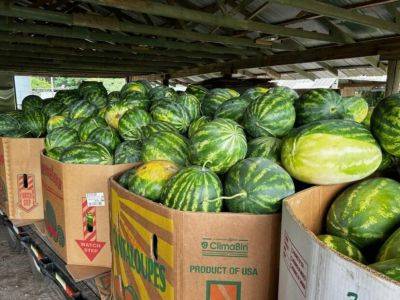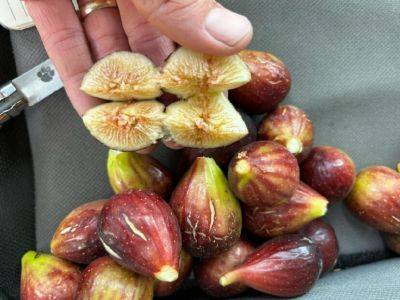Zack Snipes
SC Fruit and Vegetable Field Report – July 11, 2022
24.07.2023 - 11:59 / hgic.clemson.edu
Zack Snipes reports, “The recent rains have yet again made fields sloppy and hard to harvest. Most of our tomato crop is about finished, as are zucchini and cukes. We have had an unusually high amount of southern stem blight in tomatoes this year. We are seeing some increased worm pressure (armyworms and fruitworms) in fields that are still producing. We have planted some acreage of fall watermelon and are getting other fields ready for the fall season. Many growers are painting black plastic white to reduce the heat held in the beds. If re-using spring drip tape and plastic, it is a good idea to flush irrigation lines and pulse irrigate beds with a liquid phosphorous product before planting your fall crop.”
Justin Ballew reports, “We got more rain almost every evening last week. With the exception of a few low spots, most fields are still in a workable condition. This is one occasion when having sandy soil is a blessing. We’re entering an in-between stage where lots of spring-planted crops are finishing up, and fields are being prepped for planting fall crops. Diseases have picked up some recently, though growers are doing a pretty good job of managing them. I’ve also seen an increase in false chinch bug populations recently. In most cases, they don’t cause a whole lot of direct feeding damage, but at high populations, the bugs themselves can become contaminates in harvested greens. Hopefully, they won’t stick around long.”
Sarah Scott reports, “We wanted rain and have gotten plenty! Significant rain events following a hot and dry period have brought up some issues in the peach field. Brown rot has been hit-or-miss this year, but in some areas, it is pretty bad, with wet weather contributing to some spread. The “cooler”
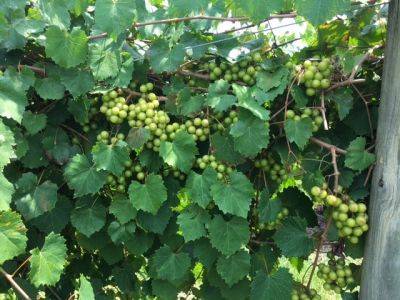
SC Fruit and Vegetable Field Report – July 26, 2021
Zack Snipes reports, “We are in a summer weather pattern with warm, muggy days and occasional thunderstorms. Most crops have finished up or are in the process. Now is a great time to sit down and do some crop planning and field rotation planning. I collected many soil and root tissue samples lately and had them analyzed for nematodes. I was surprised at how many nematodes were present in the fields. Nematodes can interfere with growth, cause stunting, and lower overall yields. Sometimes the symptoms of nematodes can be very discrete, so sampling right now is the best way to get a baseline of your populations and how to properly manage and rotate fields. If left unchecked, thousands of dollars are wasted before the first seed is planted into a field.”

SC Fruit and Vegetable Field Report July 6, 2021
Dr. Tony Keinath reports, “Basil downy mildew was found in mid-June in Charleston. Symptoms start as faint yellowing of leaves, which eventually show brown spots surrounded by yellow areas. To see the spores, look on the bottom of a symptomatic leaf. Sometimes it helps to hold the leaf up to a light source (but don’t look directly into the sun). Seeing spores is useful to rule out nutrient deficiency or sunburn on leaves. I do not know of any cultivars that truly are resistant or any organic biopesticides that are effective. Once downy mildew spores arrive in South Carolina, the disease will be present until frost kills the basil host.”

SC Fruit and Vegetable Field Report – July 20, 2021
Justin Ballew reports, “Not much has changed in the midlands over the last week. We’ve received some scattered rain, and it has been warm and humid. As a result, we are still seeing disease issues. We’re still picking tomatoes, squash, zucchini, cucumbers, sweet corn, and a few greens. We’re at an in-between stage in several fields where the spring crops have finished, and folks are preparing to plant fall crops. Some have already started fall cucurbit plantings. For anyone planting strawberries this fall, if you are still deciding which varieties to try, see NCSU’s 2020/2021 variety comparison data (pages 9 and 10).

SC Fruit and Vegetable Field Report January 18, 2022
Rob Last reports, “In our area, crops are developing well with few pest or disease issues currently. Some brassicas are displaying a reddening to the older leaves associated with reduced phosphorous uptake. Phosphorous uptake can be reduced in cold temperatures but will recover when we see some warmer temperatures. There is no response to an additional application. Where strawberries are flowering or have fruit, it is advisable to remove those to minimize sources of Botrytis gray mold for later in the year.”
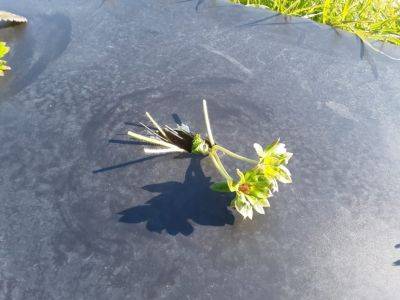
SC Fruit and Vegetable Field Report – January 31, 2022
Rob Last reports, “Pest and disease issues in the area remain very low; however, as temperatures rise, we expect activity to increase. Although it is quiet, it is still essential to continue to scout. Assessment of crops indicates that we have escaped the worst of any chill injury or loss of plants. Pruning of fruit crops continues while dormancy holds and labor begins to return to the area.”
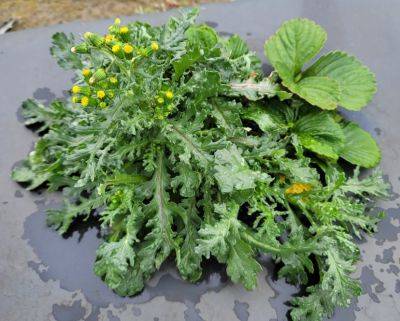
SC Fruit and Vegetable Field Report – February 7, 2022
Zack Snipes reports, “Now is the time for Lowcountry strawberry growers to give their plants the first shot of boron. Boron helps with both flower and fruit development. Growers can spray boron or inject it via the drip system. Boron deficiency will show up in your fruit if you skip out on the application. Now is the time to get it out because plants will be pushing blooms soon, and they need the boron available to make nice, pretty flowers and fruit. A boron application takes only a few minutes and literally a few dollars but can keep you from throwing away thousands of misshapen or “bullnose” berries. NOTE: Boron is a great herbicide if overapplied, so make sure you put out the right amount by using the information from the picture below. We only need to put out a tiny amount, but that tiny amount makes a big difference.”
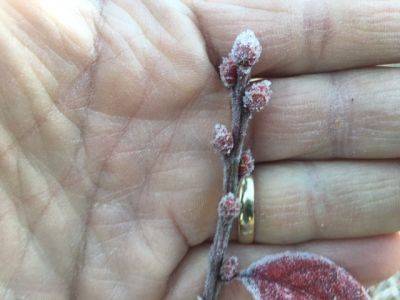
SC Fruit and Vegetable Field Report February 14, 2022
Rob Last reports, “Strawberries in the area look good, with some new leaf development emerging from the crown. Boron applications are being applied, either as a foliar application or through the drip system. Remember, we are looking to apply 1/8 lb. of boron per acre. Over application of boron can be phytotoxic and detrimental to the plants. Plans are also being made to begin fertigation applications later this month to aim for the first pick in early April. The initial target is to apply 5.25 lbs. N per acre. After the first application, a tissue test should be taken to refine fertility recommendations further. Please also remember we have the drip fertigation calculator to make the calculations more straightforward. Brassica transplants are going in the ground this week and are looking good. The pruning of peaches and perennial fruit is pretty much complete, and we await the arrival of spring.”
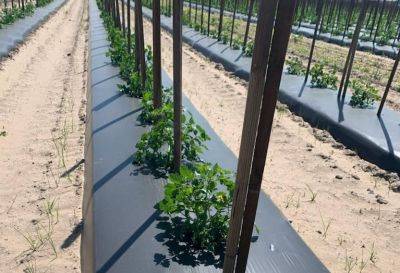
SC Fruit and Vegetable Field Report – April 18, 2022
Zack Snipes reports, “It has been a very windy spring. The winds are drying out our soils and beating up plants. I have looked at some tomatoes, and the ones that aren’t tied are wind-whipped, and the ones that are tied have callus tissue forming where the string is touching them. We have some beautiful lettuce and greens coming in right now, along with spring onions. I have also seen some squash coming in on farms that grew squash in high tunnels. Strawberry plants are still small and have very few blooms for this time of year. We are harvesting highbush blueberries in high volumes right now. I think we escaped more cold damage than previously expected.”
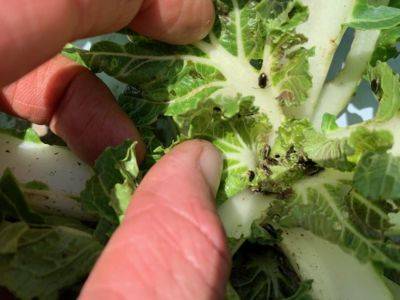
SC Fruit and Vegetable Field Report – May 31, 2022
Zack Snipes reports, “It seems like everything is coming in from the fields right now. We got some rain but could really use some more. I am seeing lots of aphids on a variety of crops (melons, cukes, eggplant). I am also seeing ladybird beetles and parasitized aphids in these fields, which means our predators are out there working for us. Bacterial wilt and Southern blight are starting to appear on tomatoes as well. Knowing the difference and preparing for next season’s crop is critical. It is getting hot and is still windy, so growers might consider adding one or more irrigation cycles to their fields. Remember that in our sandy soils, any irrigation event over an hour is just wasting water. More frequent 30-45 minute cycles are more efficient.”
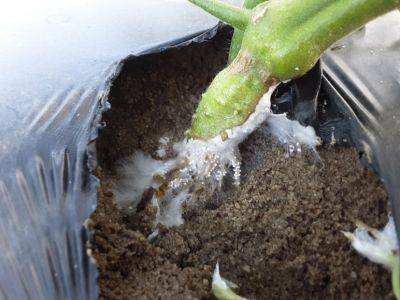
SC Fruit and Vegetable Field Report – June 6, 2022
Rob Last reports, “Insect and disease activity is increasing in the area, across a broad range of crops. In cucurbits, we are seeing powdery mildew and gummy stem blight in watermelon. Remember to keep spray intervals tight. Loopers are also being found in the area, and applications to manage rind worms will be beneficial as we rapidly approach harvest. Fusarium wilt of watermelons is showing up in many fields. At this stage, there is no effective treatment; however, soil temperatures are likely to reduce the incidence of new infections. Tomatoes and peppers are developing well with Southern blight and bacterial wilt in evidence. Spider mites are very active right now. Blackberries are just coming to harvest with good flavor and quality. Remember to scout your crops regularly to ensure timely applications can be made.”
